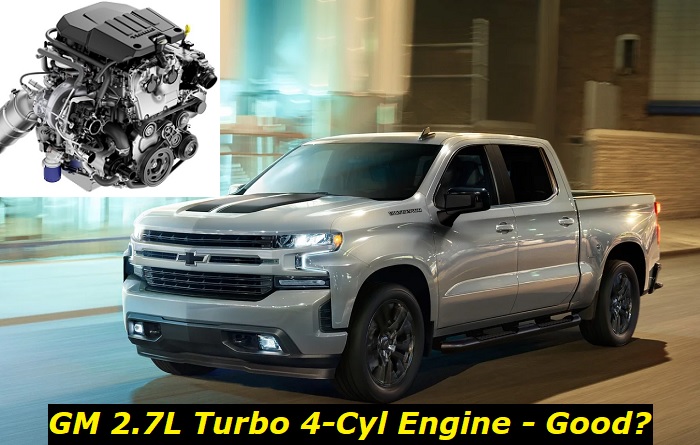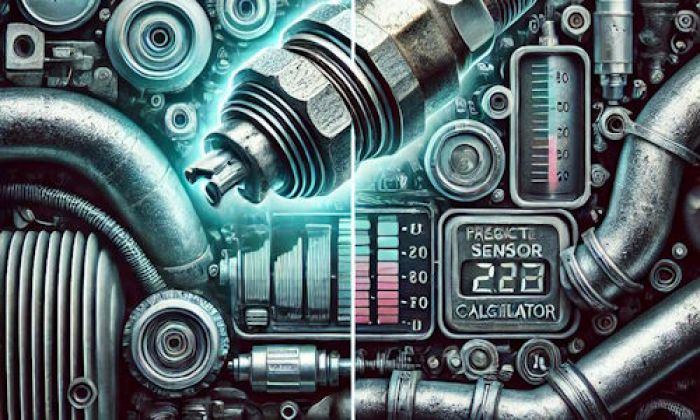General Motors still invests some money in gasoline-powered engines and offers new units on the market. The L3B series is proof of that. But is this engine that good? Can it go a decent number of miles and years? Should you invest your money and check whether the technologies are still as durable and reliable as they were a decade or two ago?
Today, we'll be discussing the 2.7L 4-Cylinder Turbocharged L3B engine offered by General Motors in the new Silverado, Colorado, GMC Canyon, and also in the Cadillac CT4. We'll have a look at the technologies used in the engine, at its durability, and also will discuss whether you should expect a lot of miles from this unit or not.

Key features and my opinion about the engine
- Production years:2018-now
- Average lifespan of L3B:170,000-200,000 miles
- Fuel supply type:direct injection
- Power range:310-325 hp
- Fuel efficiency:average
- Engine block material:aluminum
- Engine reliability score:medium
- The most common problems:wiring issues, carbon buildup on intake valves, very sensitive fuel supply system, AFM system problems.
Some facts about the 2.7L Turbo engine by GM
Well, General Motors obviously goes small. The 1.3-liter turbocharged engine in the Equinox is something no one could expect even 5 years ago. But they went further and decided to send big V8 and V6 engines from under the trucks' hoods to pension. The new replacement for them is the L3B 4-cylinder engine with only 2.7 liters of displacement. But is it as good as GM wants us to think about it?
Well, the engine is not that new as of today. It was first introduced in 2018 and now we have some Silverados that already passed a lot of miles and give us the first important data to analyze. And we can say that these engines are not as good as those old V8 machines. But let's face it - we have no choice, so let's try to find something good in them.
Here's what we can come up with:
- the 2.7-liter turbocharged L3B engine offers 310 or 325 horsepower in the majority of versions, it also has up to 430 lb-ft of torque which is not bad at all;
- while the top power is achieved after 5000 RPM and you won't rotate the engine that bad, the torque is available at 1500 RPM and this feels really good when driving;
- the block and the head are all made of cast aluminum which makes them light but not extremely durable and also not good to repair after many miles;
- the direct injection may be both good and bad depending on whether you are lucky or not, but it guarantees better fuel consumption;
- each cylinder has 4 valves, the valves are electronically controlled, and there are VVT, VVL, and also dozens of other technologies;
- the cylinder management can turn off some cylinders when driving on the highway which adds to fuel economy.
By the way, the L3B engine ensures that the Silverado, for example, can do 22 MPG on the highway and about 18 MPG in the city. This is not bad for a truck. But when towing something, the gas mileage drops severely and you better avoid looking at that trip computer screen on your dash until you stop towing the trailer.
Well, equipped with the 8-speed automatic transmission, the 2.7-liter turbocharged engine doesn't seem like a bad idea even in a very heavy truck. Of course, most of the buyers would still choose the 5.3-liter 8-cylinder option. But if you are one of them, better hurry up. Those versions are about to be out of production due to harsh ecology requirements.
How long will the 2.7L Turbo last in your GM vehicle?
As we've already told you, the 4-cylinder engine has been installed in a number of GM vehicles and its longevity directly depends on which model you have. A Cadillac CT4 is not supposed to tow something heavy and most owners will use it carefully. While a Silverado or a Colorado are vehicles that get the work done.
We would say that the durability of this engine should be stated from 120,000 to 200,000 miles. After they reach this mileage, it's not economically wise to keep using them because the repair costs you are going to experience after 200K miles are just insanely big.
Again, we want you to keep in mind that we support eco-friendly changes in cars and we actually think that GM does everything it can to save gasoline engines and to let them be there for us for a couple more years. We have to stop being too nostalgic about those big V8s because their era is over and they won't come back.
Don't want an electric F-150 Lightning? Then buy this 2.7-liter Chevy and hope you will get the one that can go over 200,000 miles. The future is pretty strict.
What are some of the potential problems with the 2.7-liter turbo engine?
The L3B engine is new but we already know some problems that may be bothering you now and then. Also, some dead engines have been investigated and now we can say why they died presuming that these problems can repeat in some (or all) other engines of the series.
So, let's see what can go wrong with your GM 2.7L turbo engine.
1. Dual-volute turbocharger problems
We know that this type of turbocharger was the best one to use in a relatively small engine for a truck. It builds up a lot of torque. But it's not very healthy in this engine.
It's not bad and it works well until you forget to change the oil on time or use some other oil than is recommended for your engine. Also, it can break down because of overheating or overloading.
But the worst thing is that the construction of the turbocharger is pretty complicated and repairing it with low costs is impossible. The replacement is the only choice, so get ready to spend some money if this turbo fails!
2. Carbon buildup, of course
All direct-injection engines will get on your nerves because of carbon buildup and very expensive cleaning. If the problem is ignored, you will have to replace very expensive injectors and other parts.
And the worst thing is that you can do nothing - the direct injection system doesn't give you a choice. The first problems come at 100K miles or a little earlier.
3. Worse fuel economy than advertised
A lot of owners report that a highway fuel economy is 19.5 MPG which is 2.5 MPG worse than advertised. It means that you will lose $10 to $14 at every full tank of fuel and this can be a lot of money after a year or two. So, a class-action lawsuit is possible and we are keeping the eye on this situation. Unfortunately, there is nothing you can do if you see poor fuel economy in your GM vehicle.
4. Lifter failures
Yes, all those wonderful technologies that control valve lifting and timing changes are cool for fuel economy. But they are not cool for high-mileage engines when these systems start failing and requiring repairs.
Lifter failure in this engine may easily lead to total damage and the need for replacement. Unfortunately, there is not a lot you can do to prevent the problem. One possible option is to avoid abusive driving.
5. Active Fuel Management system failure
One more problem these engines already experience and will show even more is the AFM system failure. The AFM technology turns off two cylinders when there is no need for them, so the engine runs with low loads and two cylinders can easily cope with the needs of the vehicle. But over time, this system fails and the two-cylinder mode can turn on when towing or when driving in city traffic.
Any problems will only be solved by dealers that have special diagnosing equipment and also take decent money for their services.
Should you buy a GM vehicle with the 2.7 Turbo engine new or used?
We can't say anything extremely bad about the 2.7L Turbo L3B engine if you buy it new. But we would never recommend anyone to buy it used. This may be the worst purchase in your life because these engines depend fully on how the previous owner used them.
Even a very good price shouldn't be the reason to buy it used. And this problem might be a red flag for some potential buyers of new GM vehicles with the L3B engine under the hood. Why? Because you will not be able to sell it at a good price. The residual value of the vehicle will fall much faster than the one of another vehicle.
Final words
We wouldn't buy the Silverado or any other GM vehicle powered by the 2.7-liter turbocharged L3B engine. But we still can't say that this engine is hopelessly bad. We've also read a lot of positive reviews from drivers. And we see some cool features and technological advantages of the unit.
But the low life expectancy and poor reliability after 100K miles as well as doubtful fuel economy and common minor problems would make us think twice before getting our money out of the wallet.
About the authors
The CarAraC research team is composed of seasoned auto mechanics and automotive industry professionals, including individuals with advanced degrees and certifications in their field. Our team members boast prestigious credentials, reflecting their extensive knowledge and skills. These qualifications include: IMI: Institute of the Motor Industry, ASE-Certified Master Automobile Technicians; Coventry University, Graduate of MA in Automotive Journalism; Politecnico di Torino, Italy, MS Automotive Engineering; Ss. Cyril and Methodius University in Skopje, Mechanical University in Skopje; TOC Automotive College; DHA Suffa University, Department of Mechanical Engineering






Add comment